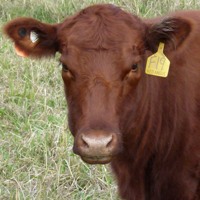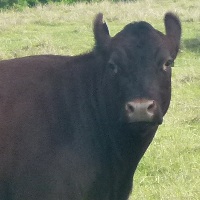ENVIRONMENTAL ADAPTABILITY
Red Angus cattle can effectively range for feed and water in our diverse Australian climates, and cope with drought and heat stress. Angus cattle do not suffer from eye cancer and Bos indicus crosses are tick resistant. Red Angus crosses are capable of fast turnoff on native and improved pastures and are highly suited to lot feeding.
TEMPERAMENT
Red Angus cattle are considered by breeders to have a gentle disposition. Worldwide reports support the docile nature of the Red Angus breed. This makes them easy to work with.
FERTILITY AND CALVING EASE
Red Angus cattle have an undisputed reputation for maternal qualities. They are very fertile, milk well and will calve at less than 2 years of age. This extra performance from early sexual maturity blends well when crossed with latter maturing cattle. Their longevity as a breeder unit is of significant economic importance.
Angus bulls have a documented reputation for a large scrotal size (per kilo liveweight) with correspondingly greater semen production. CSIRO at Townsville has established a positive link between large scrotal size in bulls and the fertility of sisters and daughters. A major advantage of Red Angus calves are their low birth weights. Angus are reputed to have fewer calving problems and therefore shorter intervals between calving. For the cattle breeder, this means more live calves on the ground.
SUPERIOR MEAT QUALITY AND CARCASS YIELD EXCELLENCE
Angus cattle are a preferred breed for the high quality beef market. They are renowned for producing quality beef as measured in the AUSMEAT chiller assessment scheme and their ability to quickly produce this quality beef to meet yield specifications is rewarded in the price premiums paid in the quality conscious markets.
Source: Red Angus Society of Australia



